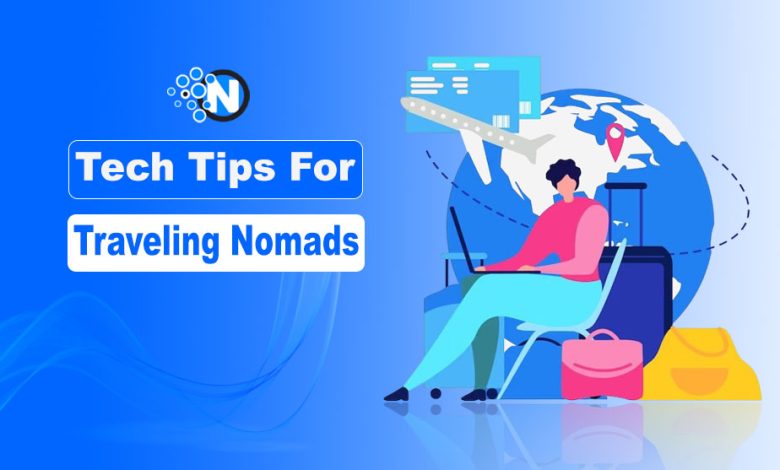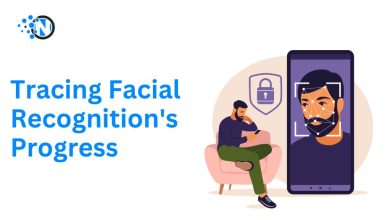Tech With Eco Connectivity: A Simple Tip For Traveling Nomads

How are digital nomads leveraging technology to maintain connectivity while promoting environmental sustainability? As the nomadic lifestyle reshapes our working paradigms, it brings with it an increased environmental impact.
In this blog post, I will explore the eco-connectivity and integration of technology with sustainable travel practices. I will also discuss essential eco-friendly technologies, provide practical tips for sustainable travel, and highlight the positive impact digital nomads can have on local communities.
So, keep reading!
Essential Eco-Friendly Technologies for Nomads
Solar-powered chargers are an innovative way to drive off the dependence on fossil fuels. These devices work by converting energy from sunlight into electricity and, henceforth, offer a mobile solution for powering electronic devices anywhere under sunlight.
The feature is beneficial for tourists and campers, giving them a green and easy source of energy. Additionally, solar-powered chargers reduce carbon emissions that result from powering electronic devices, making them an excellent option for environmentally-conscious consumers
eSIMs: Global Connectivity Without the Waste
eSIMs are the future of connectivity; no more physical SIM cards are required It will let tourists switch networks without having to go through the irksome process of physically changing any SIM, hence providing flawless connectivity while on the move.
Forget the hassle of looking for local SIM cards at every destination, welcome the era of the eSIMs. Not only will they be an option with much less plastic waste, which means they can be more environmentally friendly, but they also assure even seamless connectivity across borders.
South Korea, a popular destination for digital nomads, showcases impressive technological infrastructure. Its dynamic urban centers and tranquil rural areas provide varied environments suitable for remote work. With a South Korea eSIM, travelers can enjoy stable internet in an eco-friendly manner because no traditional SIM card will be needed hence making it possible for one to remain connected and fruitful without harming nature.

Eco-Friendly Travel Apps
From finding green accommodations to calculating your carbon footprint, there is an app for every little thing when it comes to traveling responsibly.
- EcoBnb: For eco-friendly accommodations
- Greenberg: Offset your flight’s carbon emissions
- Too Good To Go: Reduce food waste by buying surplus meals from local restaurants
Embracing Eco-Friendly Travel
The digital nomad lifestyle is a tempting life of freedom and flexibility, but it has its cost to our planet. As we globe-trot from one destination to another, so does the potential environmental impact increase. Technology, however, can be our ally in minimizing this impact.
It is what connects our digital needs with eco-awareness. Eco-connectivity means using technology, staying connected, and leaving soft footprints on the ground. It’s not a trend; it’s a need for a sustainable future of nomadism.
Importance of Sustainable Travel
Choosing Eco-Friendly Accommodations and Transportation:
- Opt for lodgings and transport options that minimize environmental impact.
- The emission can be radically reduced by using eco-friendly modes of transportation like trains and electric vehicles.
Supporting Local Economies:
- Buy local goods and services to help contribute to the economic development of the areas being visited.
- It involves the local markets and artisans, so in essence, it is supporting the community while adding to the greatness of the travel experience.
Cultural Preservation and Respect:
- Take time to learn about and respect the customs and heritage of local cultures.
- Promoting understanding and appreciation of diverse cultures fosters global respect and cohesion.
Promoting Sustainable Travel Practices:
- Implementing sustainable travel habits ensures that popular destinations retain their beauty and vitality for future visitors.
- Each responsible trip contributes positively to global conservation efforts and community well-being.
The Future of Nomadic Sustainability
The future of nomadic sustainability is the integration of eco-friendliness into the mobility lifestyle of digital nomads. As remote work is gradually accessed, the chances for nomads to affect global sustainability are attained.
It also includes the application of green technologies, such as solar-powered gadgets, and sustainable housing options, including eco-lodges or tiny homes. Digital nomads are also in a position to contribute to local economic stimulus by purchasing services and products, thereby reducing overall adverse environmental impacts caused by tourism.
But this goes beyond the mere increase in consciousness to education and awareness: when nomads themselves are online sharing their sustainable lifestyles, that encourages others to follow. The future is most likely an increase in platforms that go digital, giving resources and connecting solutions that try to be sustainable, making responsible choices within easy reach of nomads.
How Nomads Can Foster Sustainability?
Nomads can make sustainability strive through practices that have less environmental harm while supporting local cultures. This can be done through the following:
Support Local Eco-Friendly Businesses:
- When possible opt for eating and purchasing locally made meals and products to eliminate carbon emissions relating to transportation.
- Use easily accessible apps such as HappyCow to find vegan and vegetarian food that supports the locals with sustainability.
Educate and Inspire Through Social Media:
- Post your best sustainable travel practices on Instagram and TikTok.
- Showcase how you weave green habits into your nomadic lifestyle to raise awareness and inspiration for others.
Participate in Local Sustainability Initiatives:
- Participate in localized environmental conservation activities.
- Connect with eco-lodges and conservation projects from around the world through websites like Workaway, making contacts to get the most out of your travels and give back to local sustainability.
Compare Traditional Nomadic Travel With Eco-Conscious Nomadic Travel:
| Aspect | Traditional Nomadic Travel | Eco-Conscious Nomadic Travel |
| Energy Source | Primarily grid electricity | Solar power and renewable energy |
| Connectivity | Physical SIM cards | eSIMs |
| Transportation | Frequent flights | Slow travel, trains, and electric vehicles |
| Accommodation | Standard hotels | Eco-lodges and sustainable rentals |
| Food | Imported goods | Locally sourced, plant-based options |
| Waste | Single-use plastics | Reusable containers and minimal packaging |
| Technology | Multiple single-purpose devices | Multifunctional, energy-efficient gadgets |
| Community Impact | Limited local engagement | Active participation in local sustainability efforts |
This comparison highlights the significant differences in environmental impact between traditional and eco-conscious nomadic travel styles.
Conclusion
While the digital nomad lifestyle provides freedom and flexibility, it has also become a growing environmental cost. As ecologically conscious technologies begin merging with sustainable travel approaches, the carbon footprint of digital nomads can be minimized and they can help in sustainability.
It is these key ‘green’ technologies: solar-powered chargers, eSIMs, and even sustainable travel apps that help people stay connected while reducing their impact on the environment. Supporting local businesses, community initiatives, and educating others through social media are some of the ways to achieve a positive impact on local communities and inspire more sustainable travel practices.
FAQs
How can a digital nomad travel cheaply?
Digital nomads can travel affordably by staying in hostels or long-term Airbnb rentals, traveling during off-seasons, and using local public transportation. Other ways to minimize costs include preparing one’s meals and even working for lodging with sites like Workaway.
How can I be greener when I travel?
Some of the key options involve avoiding flying in favor of land transportation, choosing hotels that follow sustainability guidelines, and using reusable things like water bottles and shopping bags as part of responsible tourism. Other measures include promoting local economies through eating locally and purchasing local products, reducing carbon emissions from transport, and supporting community businesses.
How to become a digital nomad with no experience?
Learn marketable skills online through courses on Coursera or Udemy. Offer your services as a freelancer via Upwork, Fiverr, or similar platforms. Create a portfolio for yourself. Look for online communities or Facebook groups that would put you in touch with other, longer-term nomads who could share knowledge or opportunities. To begin with, try working from where you currently stay to get used to the feel of the lifestyle.




